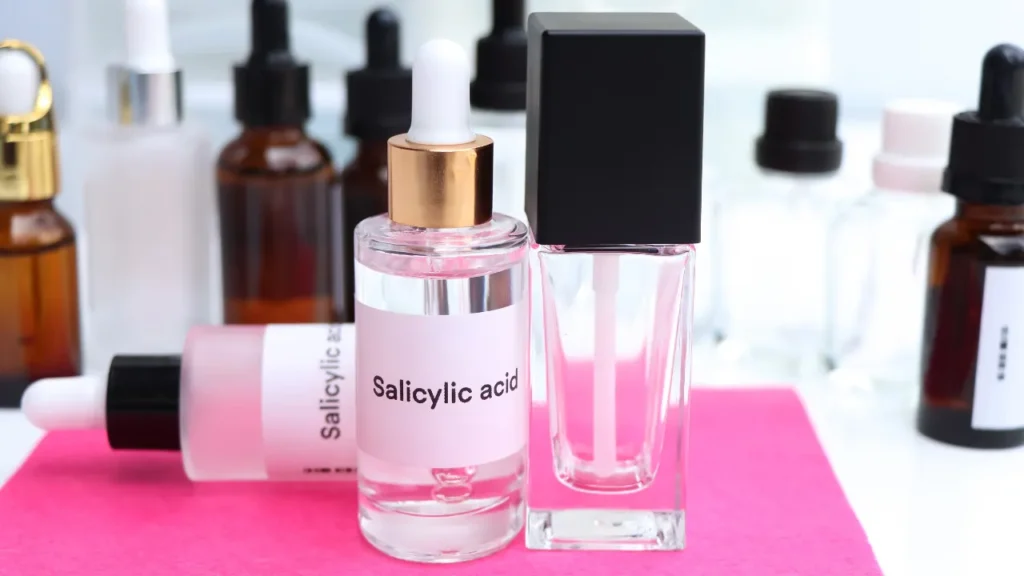The naturally occurring acids known as alpha hydroxy acids (AHAs) have been proven to have a number of positive health effects. They can be used as dietary supplements and are frequently used in skincare products. This article will cover the nature of AHAs, their health advantages, the best dosage, any potential negative effects, any possible drug interactions, and safe usage.
You May Also Like:
Verbena: Benefits, Dosage, Side Effects, Drug Interactions, and Other Important Information
Globe Flower: Benefits, Dosage, Side Effects, Drug Interactions, and Other Important Information
Alpha Hydroxy Acids: Benefits, Dosage, Side Effects, Drug Interactions, And Other Important Information is an original (NootropicsPlanet) article.
Nature of Alpha Hydroxy Acids
AHAs are a class of water-soluble organic acids found in milk and fruits. The most frequently utilized AHAs are glycolic acid, lactic acid, citric acid, malic acid, and tartaric acid. Lactic acid is the gentlest and most moisturizing AHA, whereas glycolic acid is the tiniest and most potent. AHAs remove dead skin cells’ top layer, accelerate cell renewal, and enhance collagen synthesis.
Health Benefits of Alpha Hydroxy Acids
Numerous health advantages of AHAs have been discovered, including:
- Better Skin Texture and Tone: AHAs are frequently included in skincare products to enhance skin tone and texture. They can lighten dark spots and hyperpigmentation, minimize the visibility of fine lines and wrinkles, and smooth out rough skin.
- Acne Treatment: AHAs can treat acne by clearing clogged pores, decreasing swelling, and halting the development of fresh spots.
- Anti-Aging: AHAs can boost collagen production, lessening the appearance of wrinkles, fine lines, and sagging skin.
- Sun Damage Repair: AHAs help reverse sun damage by accelerating cell renewal and fading hyperpigmentation and sun spots.
- Skin Hydration: Lactic acid is a mild and hydrating AHA that can increase skin hydration and lessen dryness and flakiness.
- Treatment of Keratosis Pilaris: Keratosis pilaris is a common skin problem that results in rough, bumpy skin on the arms and legs. AHAs can help treat this condition.

Chemistry of Alpha Hydroxy Acids
A type of organic carboxylic acid known as alpha hydroxy acids (AHAs) has a hydroxyl group (OH) in the alpha position, which is adjacent to the carboxylic acid group. Glycolic, lactic, citric, and malic acids are the AHAs most frequently found in skin care products and dietary supplements. These AHAs can easily permeate the skin because of their low molecular weight and water solubility.
Physiological Mechanisms of Action
AHAs have intricate and varied physiological mechanisms that work in the body and the brain. There is evidence that AHAs:
- Remove dead skin cells from the skin surface: AHAs remove dead skin cells from the skin’s surface so that new, healthier cells can grow in their place. This enhances the texture and tone of the skin.
- Promote collagen formation: Collagen is a protein that gives the skin structure and elasticity, and AHAs promote its production. This enhances skin firmness and lessens the visibility of fine lines and wrinkles.
- Increase skin hydration: AHAs improve the skin’s barrier function and natural moisturizing elements to hydrate the skin.
- Treat acne: By exfoliating the skin, decreasing inflammation, and controlling sebum production, AHAs can help treat acne.
- Cure sun damage: AHAs can cure sun damage by exfoliating the skin, boosting the creation of collagen, and lessening the visibility of sun spots and pigmentation.
- Treat keratosis pilaris: AHAs can help treat keratosis pilaris, a condition that results in tiny, rough bumps on the skin, by exfoliating the affected area and lowering inflammation.
- Enhance cognitive function: Animal studies have demonstrated that AHAs enhance cognitive performance by raising brain-derived neurotrophic factor (BDNF) levels. This protein supports the survival and proliferation of neurons.
- Protect against neurodegenerative diseases: By lowering oxidative stress and inflammation in the brain, AHAs may have neuroprotective effects and guard against neurodegenerative illnesses like Alzheimer’s and Parkinson’s.
AHAs work through various complex physiological pathways, requiring more study to comprehend how they ultimately affect the body and brain.

Optimal Dosage of Alpha Hydroxy Acids
The ideal AHA dosage will vary depending on the exact AHA being used and its intended usage. AHAs are commonly found in skincare products at concentrations of 5–10%, while doctors may use higher amounts in chemical peels. When using AHAs as nutritional supplements, it’s crucial to take them as indicated on the label or as instructed by a healthcare provider.
Side Effects of Alpha Hydroxy Acids
While AHAs are typically safe when used as recommended, some people may experience adverse effects. Typical adverse effects include:
- Skin Irritation: AHAs can irritate and itch the skin, especially in people with sensitive skin.
- Sun Sensitivity: When using AHAs, applying sunscreen and staying out of the sun is crucial because AHAs might make skin more sensitive to the sun.
- Dryness and Peeling: AHAs can make your skin feel dry and start to peel, especially if you use them on sensitive skin or in high doses.
- Allergic Reactions: On occasion, AHAs can result in allergic reactions such as hives, edema, and breathing difficulties.
Potential Substance Interactions with Alpha Hydroxy Acids
AHAs may interact with the following substances:
- Retinoids: AHAs and retinoids should not be used together because they might make skin more sensitive and irritated.
- Benzoyl peroxide: Avoid using AHAs and benzoyl peroxide together, as they can reduce each other’s effectiveness.
- Salicylic Acid: Salicylic acid can be combined with AHAs, but it’s best to avoid it because it can dry up and irritate the skin.
- Vitamin C: Vitamin C offers extra antioxidant and skin-brightening properties when used with AHAs.

Best Responsible Uses of Alpha Hydroxy Acids
To utilize AHAs ethically, it’s crucial to:
- Begin with a low concentration: If this is your first time using AHAs, start with a product with a low concentration and progressively increase as tolerated.
- Patch test: To make sure you won’t experience an unpleasant response, patch test an AHA product on a small patch of skin before using it on your face.
- Apply sunscreen: When using AHAs, it’s crucial to apply sunscreen and stay out of the sun because AHAs might make skin more sensitive to the sun.
- Prevent using other exfoliating products: When used in conjunction with AHAs, other exfoliating products, such as scrubs or brushes, can irritate and dry out the skin.
- Follow the suggested usage guidelines: To prevent potential adverse effects, follow the suggested usage guidelines on the product label or as instructed by a healthcare practitioner.
Alpha Hydroxy Acids:
Conclusion
Alpha hydroxy acids (AHAs) offer a range of potential health benefits for the skin, primarily due to their exfoliating and skin-renewing properties. While AHAs provide these benefits, it’s essential to use them with caution, especially for individuals with sensitive skin. Overuse or improper application of AHAs can lead to skin irritation, redness, and increased sensitivity to sunlight.
Additionally, individuals with certain skin conditions, such as eczema or rosacea, may need to avoid or limit the use of AHAs. When used appropriately and as part of a comprehensive skincare routine, AHAs can contribute to healthier, more radiant skin. Consulting with a dermatologist or skincare professional can help determine the most suitable AHA products and usage regimen for individual skincare needs.

References:
- Applications of hydroxy acids: classification, mechanisms, and photoactivity. . https://www.ncbi.nlm.nih.gov/pmc/articles/PMC3047947/
- α-Hydroxy acids and their derivatives: cosmetic applications and recent research advances.. https://www.mdpi.com/2079-9284/5/1/10
- Advances in α-hydroxy acid-based peel formulations: a new frontier in topical antiaging therapy. https://www.ncbi.nlm.nih.gov/pmc/articles/PMC3608542/
Important Note: The information contained in this article is for general informational purposes only, and should not be construed as health or medical advice, nor is it intended to diagnose, prevent, treat, or cure any disease or health condition. Before embarking on any diet, fitness regimen, or program of nutritional supplementation, it is advisable to consult your healthcare professional in order to determine its safety and probable efficacy in terms of your individual state of health.
Regarding Nutritional Supplements Or Other Non-Prescription Health Products: If any nutritional supplements or other non-prescription health products are mentioned in the foregoing article, any claims or statements made about them have not been evaluated by the U.S. Food and Drug Administration, and such nutritional supplements or other health products are not intended to diagnose, treat, cure, or prevent any disease.



